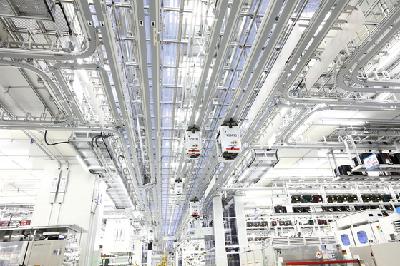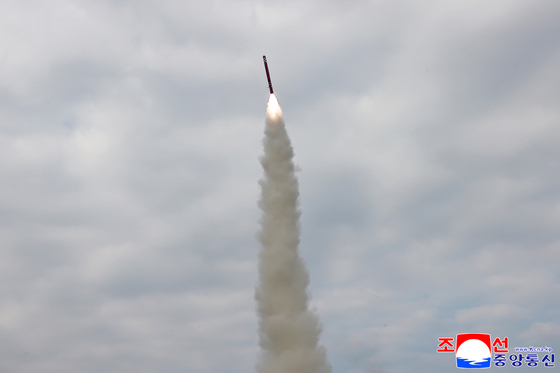Korean researchers develop chip that mimics how human brain learns
Update: 2025-10-30
Description
This article is by Eo Hwan-hee and read by an artificial voice.
Korean researchers have built a neuromorphic chip that mimics how the human brain learns and processes information, enabling brain-signal analysis up to 20,000 times faster than before and opening new possibilities for next-generation AI and brain-computer interface technology.
The Korea Institute of Science and Technology (KIST) said on Oct. 27 that its research team developed a semiconductor modeled on the neural network of the human brain. The chip, known as a "neuromorphic chip," combines the words neuron and morphic and reproduces how the brain processes and learns data through interconnected neurons.
Unlike conventional GPUs, which focus on computation, a neuromorphic chip emphasizes learning and parallel processing, enabling high efficiency with minimal energy use.
"Because intelligence forms through connections between neurons, the core concept of neuromorphic technology lies in analyzing and implementing that connectivity," said Park Jong-gil, a senior researcher at KIST's Semiconductor Technology Research Group. "Approaching the problem of brain-signal analysis using a neuromorphic method represents a new way of thinking."
The chip could play a key role in advancing brain-computer interface (BCI) systems, which aim to connect the human brain directly to machines.
A major challenge in BCI research lies in interpreting complex signals from thousands of neurons quickly and accurately. Conventional methods rely on storing neural activity data for long periods and conducting post-analysis, but the new chip can analyze data in real time without storage.
Using this technology, researchers can analyze neural connections up to 20,000 times faster than before.
"Beyond BCI systems that allow people to control devices through thought alone, this chip can be applied to fields such as autonomous driving and satellite communications, which require real-time processing of complex sensor signals," Park said.
The research team designed the chip using a principle known as spike-timing-dependent plasticity (STDP), which adjusts synaptic strength based on the precise timing of neural signals. The chip detects timing differences between signals and adjusts the strength of synaptic connections accordingly.
Developed on an on-chip architecture, the device performs all computations and weight adjustments internally, allowing it to learn and adapt like a biological brain.
The research results were published in the latest issue of IEEE Transactions on Neural Systems and Rehabilitation Engineering.
This article was originally written in Korean and translated by a bilingual reporter with the help of generative AI tools. It was then edited by a native English-speaking editor. All AI-assisted translations are reviewed and refined by our newsroom.
Korean researchers have built a neuromorphic chip that mimics how the human brain learns and processes information, enabling brain-signal analysis up to 20,000 times faster than before and opening new possibilities for next-generation AI and brain-computer interface technology.
The Korea Institute of Science and Technology (KIST) said on Oct. 27 that its research team developed a semiconductor modeled on the neural network of the human brain. The chip, known as a "neuromorphic chip," combines the words neuron and morphic and reproduces how the brain processes and learns data through interconnected neurons.
Unlike conventional GPUs, which focus on computation, a neuromorphic chip emphasizes learning and parallel processing, enabling high efficiency with minimal energy use.
"Because intelligence forms through connections between neurons, the core concept of neuromorphic technology lies in analyzing and implementing that connectivity," said Park Jong-gil, a senior researcher at KIST's Semiconductor Technology Research Group. "Approaching the problem of brain-signal analysis using a neuromorphic method represents a new way of thinking."
The chip could play a key role in advancing brain-computer interface (BCI) systems, which aim to connect the human brain directly to machines.
A major challenge in BCI research lies in interpreting complex signals from thousands of neurons quickly and accurately. Conventional methods rely on storing neural activity data for long periods and conducting post-analysis, but the new chip can analyze data in real time without storage.
Using this technology, researchers can analyze neural connections up to 20,000 times faster than before.
"Beyond BCI systems that allow people to control devices through thought alone, this chip can be applied to fields such as autonomous driving and satellite communications, which require real-time processing of complex sensor signals," Park said.
The research team designed the chip using a principle known as spike-timing-dependent plasticity (STDP), which adjusts synaptic strength based on the precise timing of neural signals. The chip detects timing differences between signals and adjusts the strength of synaptic connections accordingly.
Developed on an on-chip architecture, the device performs all computations and weight adjustments internally, allowing it to learn and adapt like a biological brain.
The research results were published in the latest issue of IEEE Transactions on Neural Systems and Rehabilitation Engineering.
This article was originally written in Korean and translated by a bilingual reporter with the help of generative AI tools. It was then edited by a native English-speaking editor. All AI-assisted translations are reviewed and refined by our newsroom.
Comments
In Channel
























